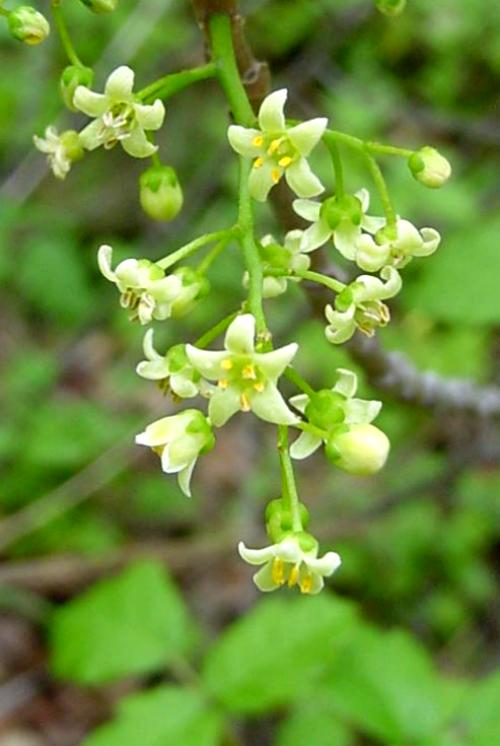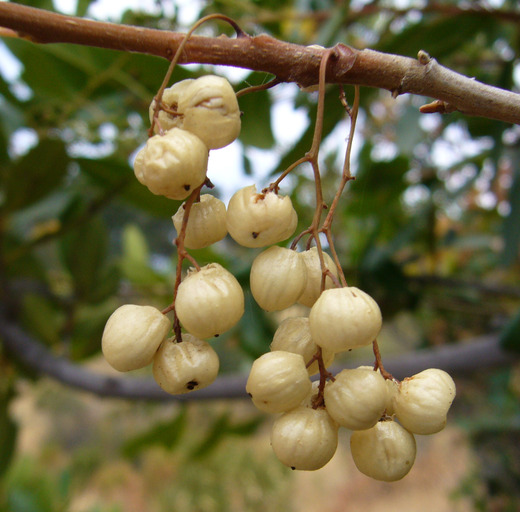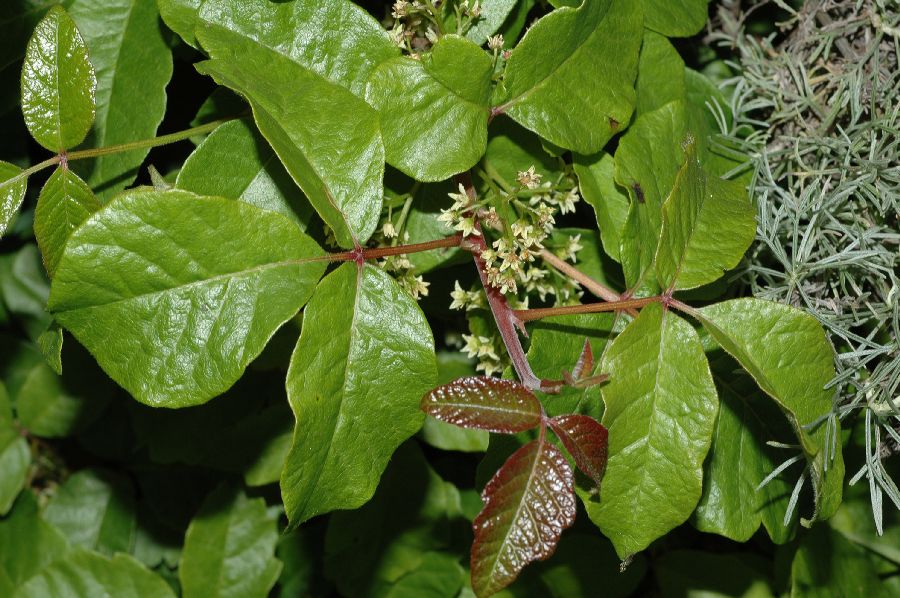Reproduction
Like all plants Toxicodendron diversilobum exhibits an alternation of generations. This means that during the life cycle of the plant it alternates between a multicellular diploid sporophyte generation and a multicellular haploid gametophyte generation. Since the Pacific poison oak is in the phylum Angiosperm it has a dominant sporophyte generation which means that the gametophyte generation will be more dependent on the sporophyte generation.
 The first part of the angiosperm life cycle takes place in the flower of
the plant. Here in the anther the microsporocytes develop and
undergo meiosis which produces haploid microspores. Each microspore undergoes one division of mitosis to form a generative cell
and a tube cell. Together they form an immature pollen grain.
The generative cells then go through a second mitotic division which
produces two sperm nuclei. Inside the ovule one megaspore
undergoes meiosis to form four haploid megaspore. Three die off
and one remains. The remaining megaspore undergoes three mitotic
divisions and generates an 8 nucleate embryo sac also known as a megagametophyte.
The first part of the angiosperm life cycle takes place in the flower of
the plant. Here in the anther the microsporocytes develop and
undergo meiosis which produces haploid microspores. Each microspore undergoes one division of mitosis to form a generative cell
and a tube cell. Together they form an immature pollen grain.
The generative cells then go through a second mitotic division which
produces two sperm nuclei. Inside the ovule one megaspore
undergoes meiosis to form four haploid megaspore. Three die off
and one remains. The remaining megaspore undergoes three mitotic
divisions and generates an 8 nucleate embryo sac also known as a megagametophyte.
Next pollination occurs. The pollen grain germinates on the stigma
where a pollen tube grows down into the style. Eventually it grows
down into the ovary through the micropyle. One sperm nucleus then
fuses with the egg which creates a diploid zygote, and the other sperm
fuses with the central cell of the egg to form the endospore.
Now that the embryo has formed it grows inside the embryo sac. The
ovule creates a protective seed coat around the embryo and embryo sac.
Then the seed is dropped from fruit where the seed waits until
conditions are right to germinate and grow. This generates another
diploid sporophyte which eventually matures beginning the process all
over again.


©2003 Michael Charters
©2008 Zoya Akulova
